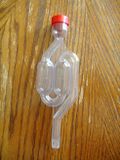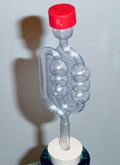Airlock: Difference between revisions
Jump to navigation
Jump to search
Uncle Jesse (talk | contribs) Adding category |
Uncle Jesse (talk | contribs) No edit summary |
||
| Line 3: | Line 3: | ||
An airlock also prevents things like contaminants and bugs from getting into the wash. | An airlock also prevents things like contaminants and bugs from getting into the wash. | ||
[[image:Bubbler.gif|thumb|left|Airlock gif.]] | [[image:Bubbler.gif|thumb|200px|left|Airlock gif.]] | ||
[[image:Airlock,_Three-Piece.gif|thumb|right|Airlock.]] | [[image:Airlock,_Three-Piece.gif|thumb|180px|right|Airlock.]] | ||
[[image:Air_Lock.JPG|thumb|left|Airlock.]] | [[image:Air_Lock.JPG|thumb|120px|left|Airlock.]] | ||
[[image:Air_Lock_Cylinder-Type.jpg|thumb|right|Airlock.]] | [[image:Air_Lock_Cylinder-Type.jpg|thumb|120px|right|Airlock.]] | ||
[[image:Air_Lock_S-curve_Type.jpg|thumb|left|Airlock.]] | [[image:Air_Lock_S-curve_Type.jpg|thumb|120px|left|Airlock.]] | ||
Revision as of 00:40, 15 September 2017
When a wash is fermenting, it produces very large amounts of carbon dioxide gas. An airlock, or fermentation lock, allows this gas to escape by bubbling through water. The water allows gas to escape but prevents oxygen from entering the fermenter. This is important because if yeast has access to oxygen, it forgets about fermenting and simply reproduces aerobically.
An airlock also prevents things like contaminants and bugs from getting into the wash.




